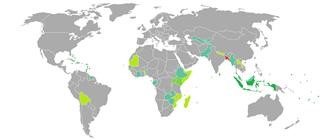The Infertility Organization
Infertility Problem Remedies
You found the best source for complete info and resources for Infertility Problem Remedies online.
Prior to its conception, laparoscopy was a surgical approach with very few applications, mainly for purposes of diagnosis and performance of simple procedures in gynecologic applications.[citation needed] The first publication on modern diagnostic laparoscopy by Raoul Palmer appeared in 1947,[36] followed by the publication of Hans Frangenheim and Kurt Semm, who both practised CO 2 hysteroscopy from the mid-1970s.[37] In 1972, Clarke invented, published, patented, presented, and recorded on film laparoscopic surgery, with instruments marketed by the Ven Instrument Company of Buffalo, New York.[38] In 1975, Tarasconi, from the Department of Ob-Gyn of the University of Passo Fundo Medical School (Passo Fundo, RS, Brazil), started his experience with organ resection by laparoscopy (Salpingectomy), first reported in the Third AAGL Meeting, Hyatt Regency Atlanta, November 1976 and later published in The Journal of Reproductive Medicine in 1981.[39] This laparoscopic surgical procedure was the first laparoscopic organ resection reported in medical literature. Modifiable and non-modifiable risk factors for poor semen quality: a case-referent study. Fibroids Non-cancerous growths called fibroids in or around the womb can affect fertility.
A woman comes to your consultation-hour and you diagnose an ovarian hyperstimulation syndrome. To accomplish this, the literature was searched for the keywords of "Management of infertility, infertile couples" at library website of University of Bristol (MetaLib) by using a cross-search of different medical databases such as ... This measurement is called the antral follicle count and may correlate with fertility potential. As the amount of adipose tissue increases, there is more aromatase available to convert androgens, and serum estradiol levels increase. If the woman reaches the age of 40 during treatment, complete the current full cycle but do not offer further full cycles. In women aged 40–42 years who have not conceived after 2 years of regular unprotected intercourse or 12 cycles of artificial insemination (where 6 or more are by intrauterine insemination), offer 1 full cycle of IVF, with or without ICSI. When clomiphene binds to estrogen receptors in the hypothalamus, it leads to an increase release of an important signaling hormone called GnRH (gonadotropin releasing hormone).
More Information About Infertility Awareness Month Australia

Below are Some Even more Resources on Infertility Awareness Month Australia
The initial dosage of clomiphene is 50 mg daily for five days starting on day 3 to 5 of the menstrual cycle. 16. Investigation of suspected tubal and uterine abnormalities: 1. Most recommend dosing CC on cycle days 3-7 to improve response and ovulation around cycle day 14. After injection of the sperm, the patient remains in the recumbent position for 10-15 minutes. This can happen as a result of: an infection of your testicles testicular cancer testicular surgery a problem with your testicles you were born with (a congenital defect) when one or both testicles hasn't descended into the scrotum, the loose sac of skin that contains your testicles (undescended testicles) injury to your testicles Sterilisation Some men choose to have a vasectomy if they don't want children or any more children. It involves cutting and sealing off the tubes that carry sperm out of your testicles (the vas deferens) so your semen will no longer contain any sperm. Hysterosalpingography: Fluid is injected into the woman's uterus and X-rays are taken to determine whether the fluid travels properly out of the uterus and into the fallopian tubes.
More Resources For Infertility Problem Remedies
Sperm Granuloma and Reversibility of Vasectomy. (PDF, 11 MB) Lancet, 1977. This prevents the sperm from fertilizing the egg. Women in group II include those with polycystic ovary syndrome and hyperprolactinemia.
Here are Some Even more Information on Infertility Problem Remedies
In humans, infertility is the inability to become pregnant after one year of intercourse without contraception involving a male and female partner.[2] There are many causes of infertility, including some that medical intervention can treat.[3] Estimates from 1997 suggest that worldwide about five percent of all heterosexual couples have an unresolved problem with infertility. This diagnosis is therefore shared by 15% of couples attempting to conceive. One of the best known is the HFEA – The UK's regulator for fertility treatment and embryo research. This hormone then binds to another area of the brain called the pituitary gland and leads to the release of FSH (follicle stimulating hormone), a hormone that directly binds to cells in the ovary, leading to egg growth and maturation. Microscopic Vasectomy Reversal 30 Years Later: A Summary of 4010 Cases by the Same Surgeon. (PDF, 295 KB)Journal of Andrology, 2004. Polycystic ovary syndrome (PCOS): The ovaries function abnormally and ovulation may not occur. This hormone then binds to another area of the brain called the pituitary gland and leads to the release of FSH (follicle stimulating hormone), a hormone that directly binds to cells in the ovary, leading to egg growth and maturation. As the duration of treatment prolonged, psychological suffering is likely to increase [6]. 33 Use of antioxidants such as zinc, vitamin E, or l-carnitine showed increased live birth rates in three small randomized controlled trials in couples undergoing assisted reproductive technology. Normal Fertilization of Human Oocytes after Testicular Sperm Extraction and Intracytoplasmic Sperm Injection.(PDF, 2 MB) Fertility and Sterility, 1994.
Previous Next
See also
Singleness and Infertility
Infertility Funding
Infertility Support Group San Diego